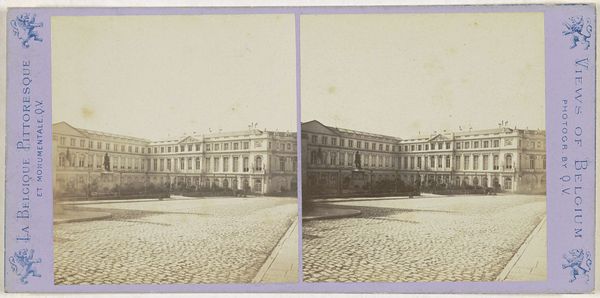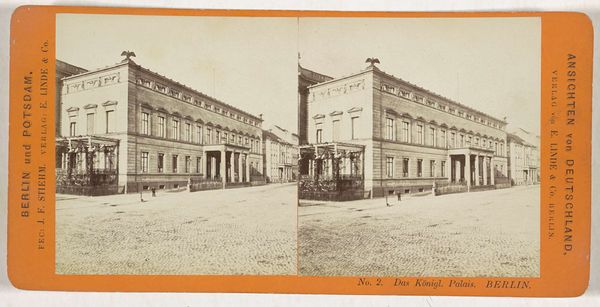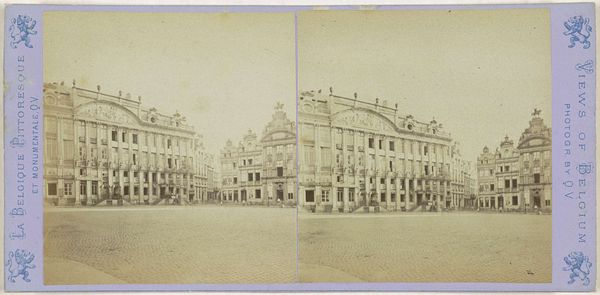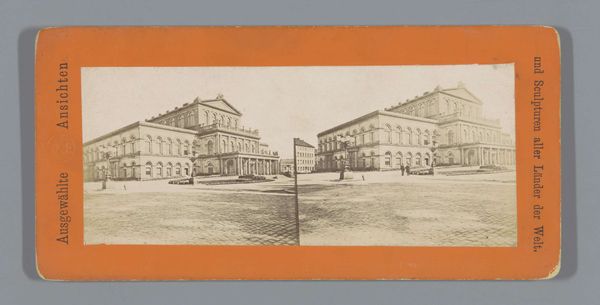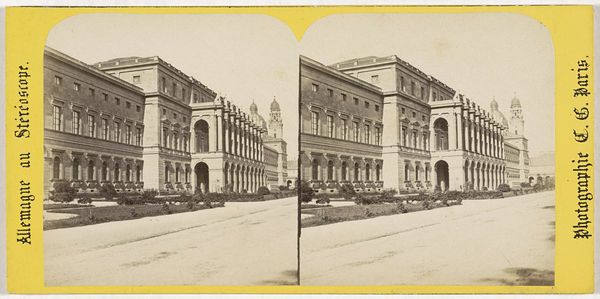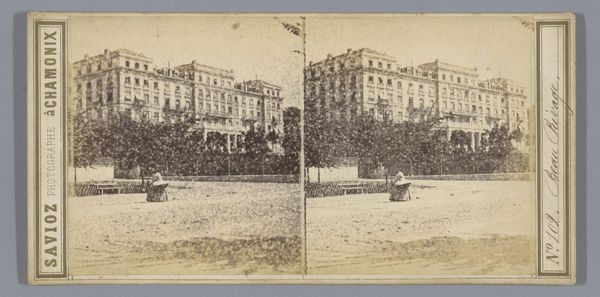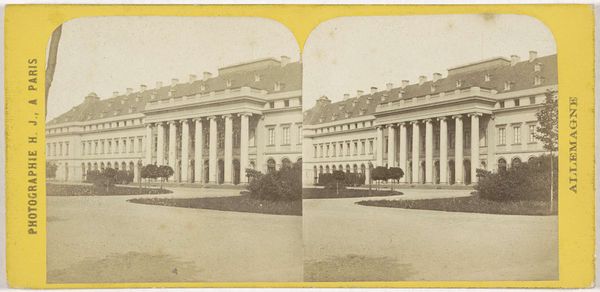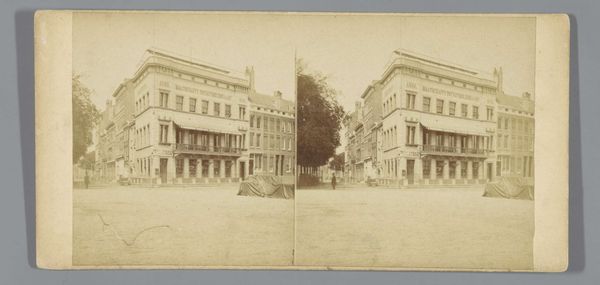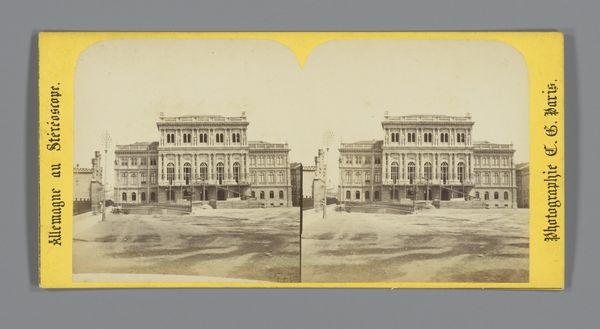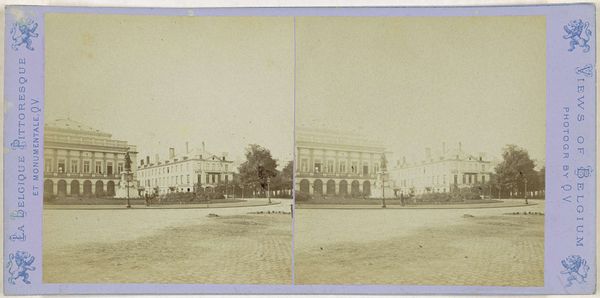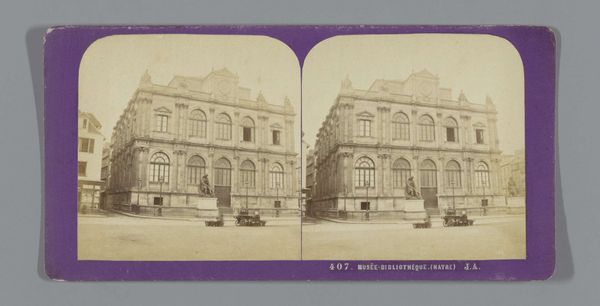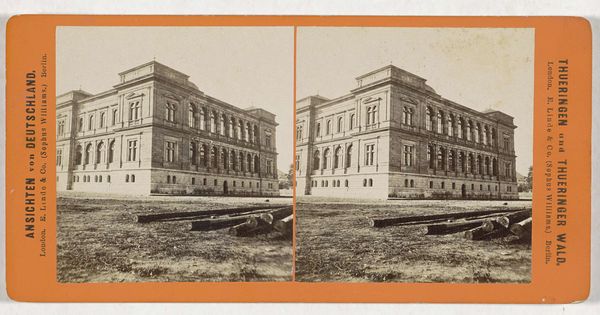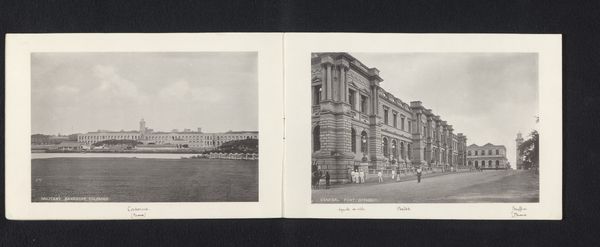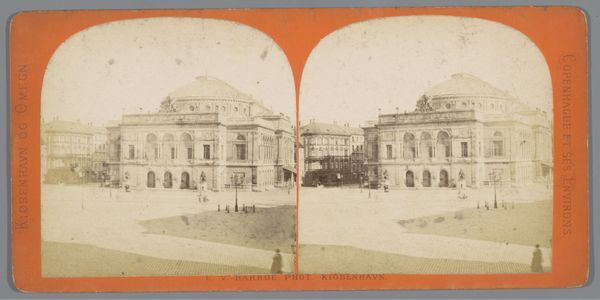
print, photography, albumen-print
# print
#
photography
#
cityscape
#
albumen-print
#
realism
Dimensions: height 86 mm, width 177 mm
Copyright: Rijks Museum: Open Domain
Curator: This stereoscopic albumen print, taken between 1866 and 1870 by Jules Hippolyte Quéval, depicts the Academiënpaleis in Brussels. What's your initial impression? Editor: It strikes me as an image steeped in formality and perhaps a hint of intended grandeur undermined by its somewhat faded tone. The building itself looks formidable, but there is also a kind of somber feeling about it. Curator: Yes, it carries an aura of stateliness, which is amplified when one considers the symbolic weight of such a public building and its visual messaging. Its visual presence would shape civic pride and societal aspirations. Editor: Indeed, it is a building intended to represent the aspirations of the people. But in an era defined by its stark political hierarchies, and framed within the socio-cultural conditions of its time, did this architecture inspire genuine sentiments of collective identity and national unity, or did it merely project an imposing and exclusive idea? Curator: You've hit upon the core duality. The regularity of the windows and the repeated arches do evoke ideals of Enlightenment rationality and progress. This calculated aesthetic emphasizes order. It visually anchors intellectual aspirations, but there's perhaps an unintentional monotony too. Editor: And consider the relatively small figures on the lawn, seemingly dwarfed by the imposing facade of the building. It seems like this image inadvertently comments on the distance between the institution and the individual. The Academiënpaleis, meant to stand as a beacon, here subtly presents an expression of power. Curator: Interesting, seeing those implied narratives is where historical image interpretation becomes profound. The cultural and political memory imbued in visual forms shifts meanings across eras and viewership. Editor: Ultimately, analyzing such historical artifacts as public documents offers valuable lessons on the role of institutions in society, both then and now, challenging us to look deeper into how the public perceives them and how we ensure their alignment with the shared values and needs of the populace. Curator: Indeed. Photography freezes not just light, but also cultural momentums and unresolved sociopolitical currents that keep rippling. Editor: This print serves as a compelling reminder that even seemingly straightforward architectural portrayals are rich in layered meaning and capable of provoking significant reflection on social structure.
Comments
No comments
Be the first to comment and join the conversation on the ultimate creative platform.
